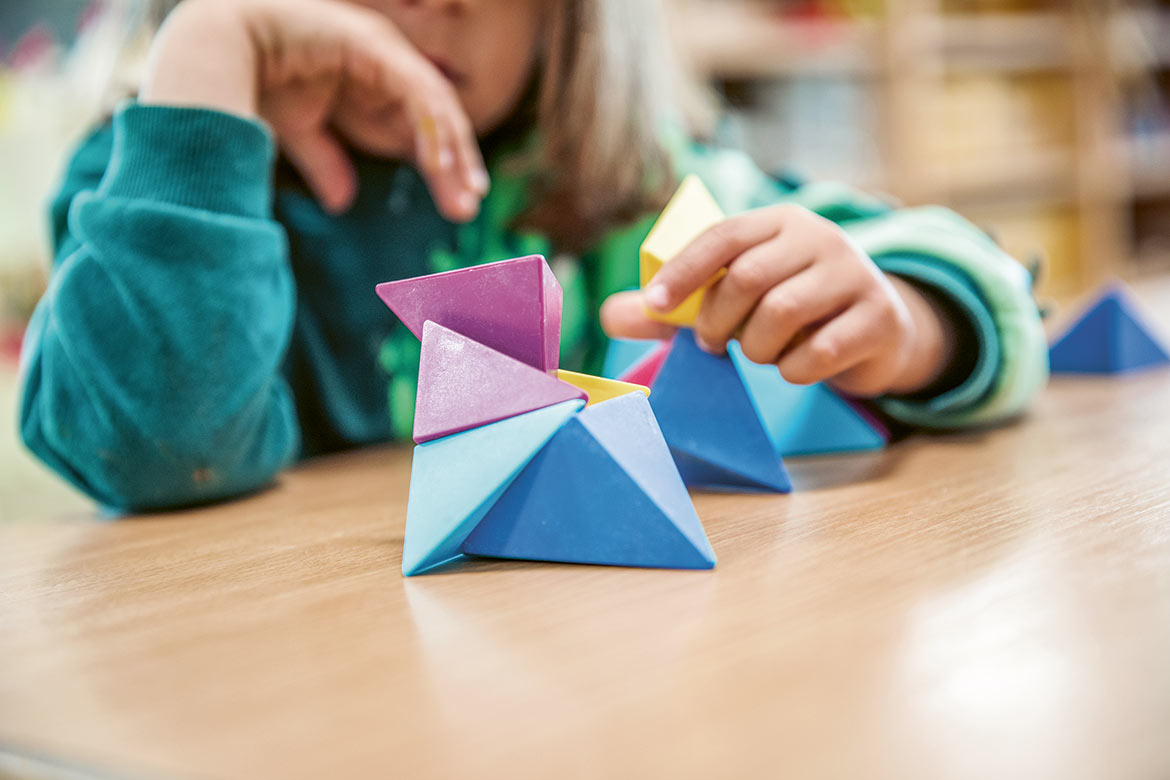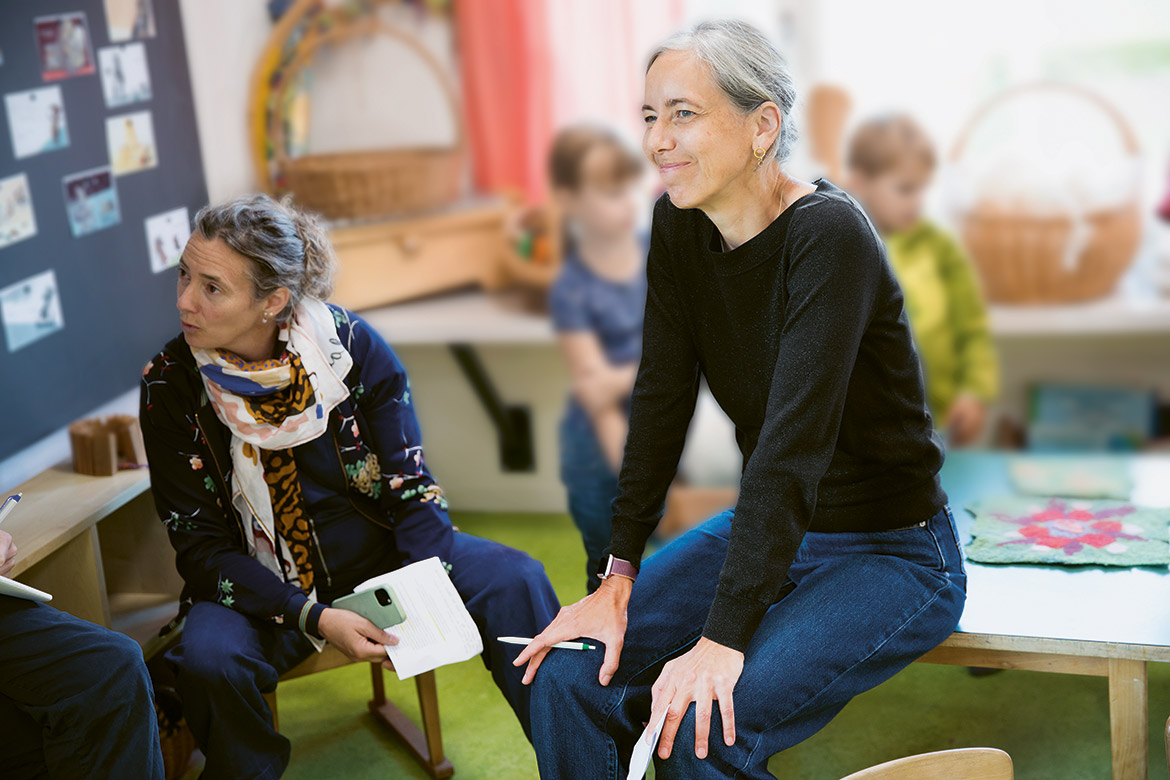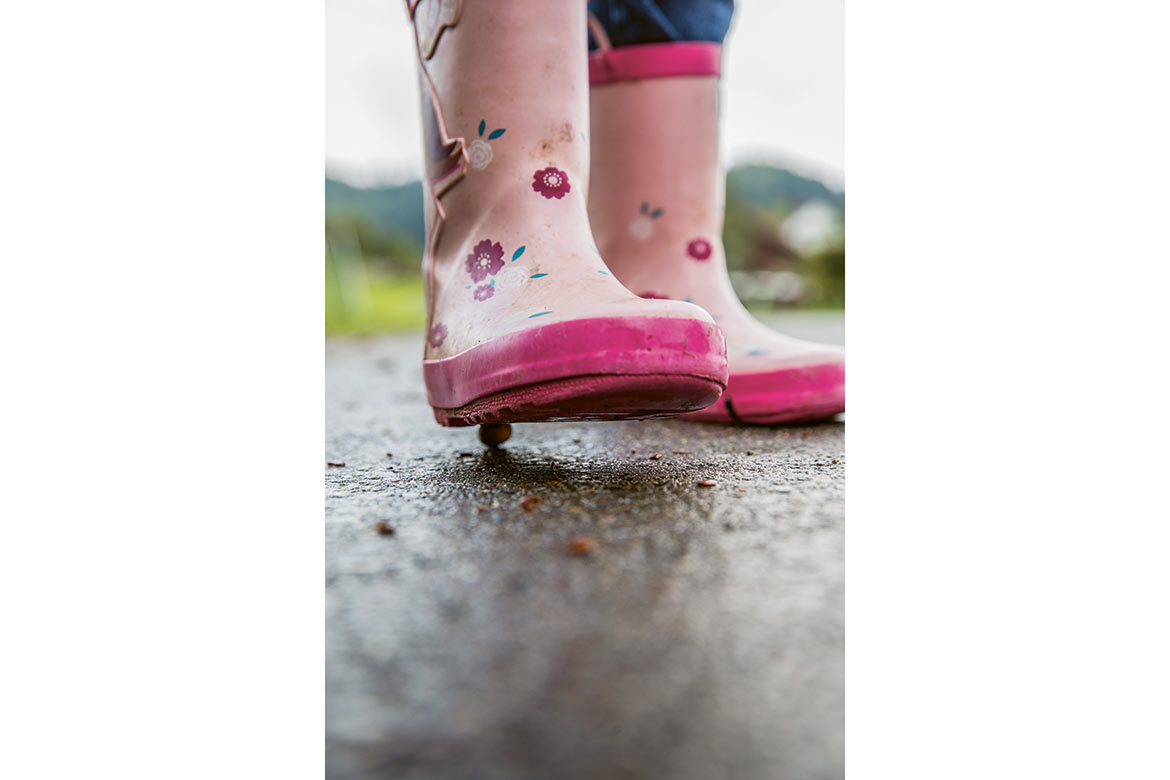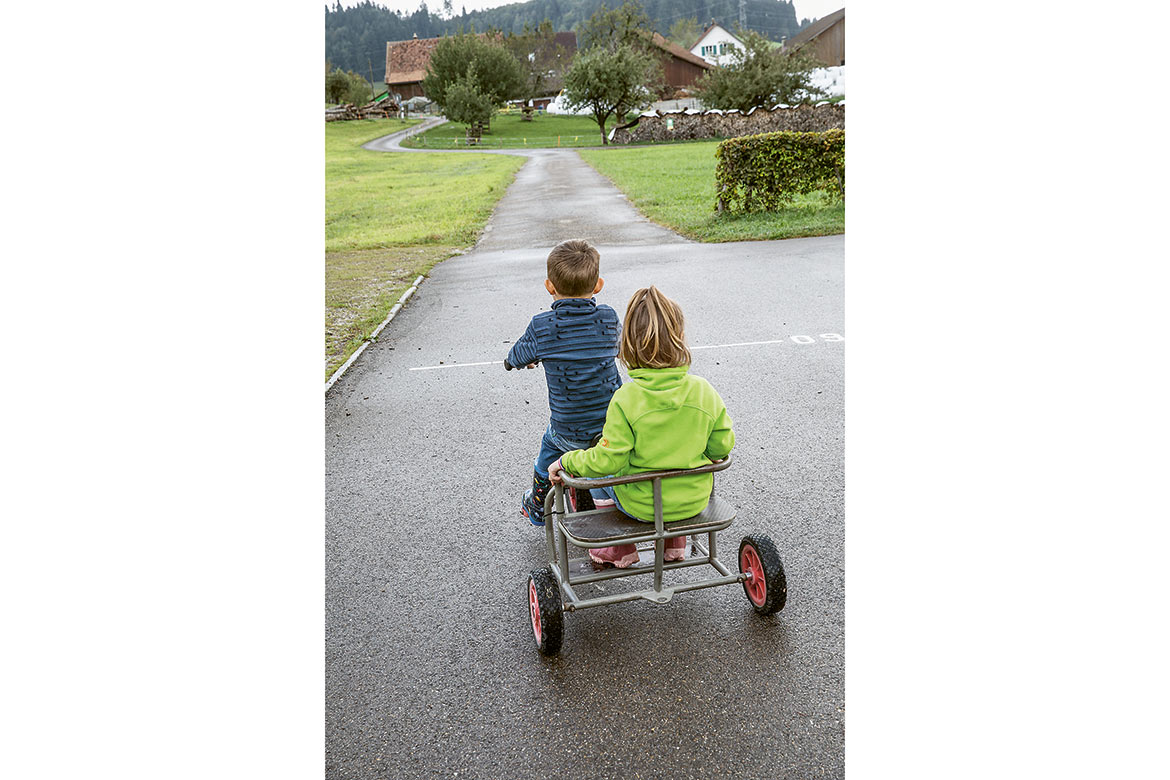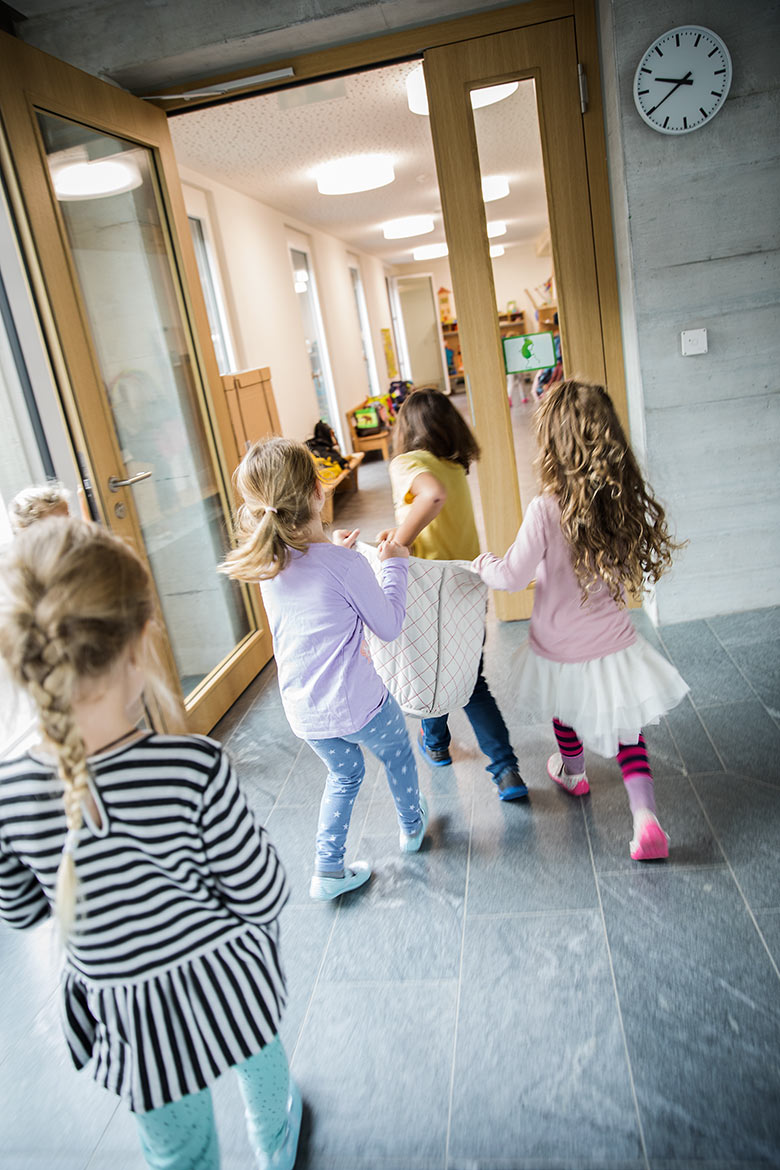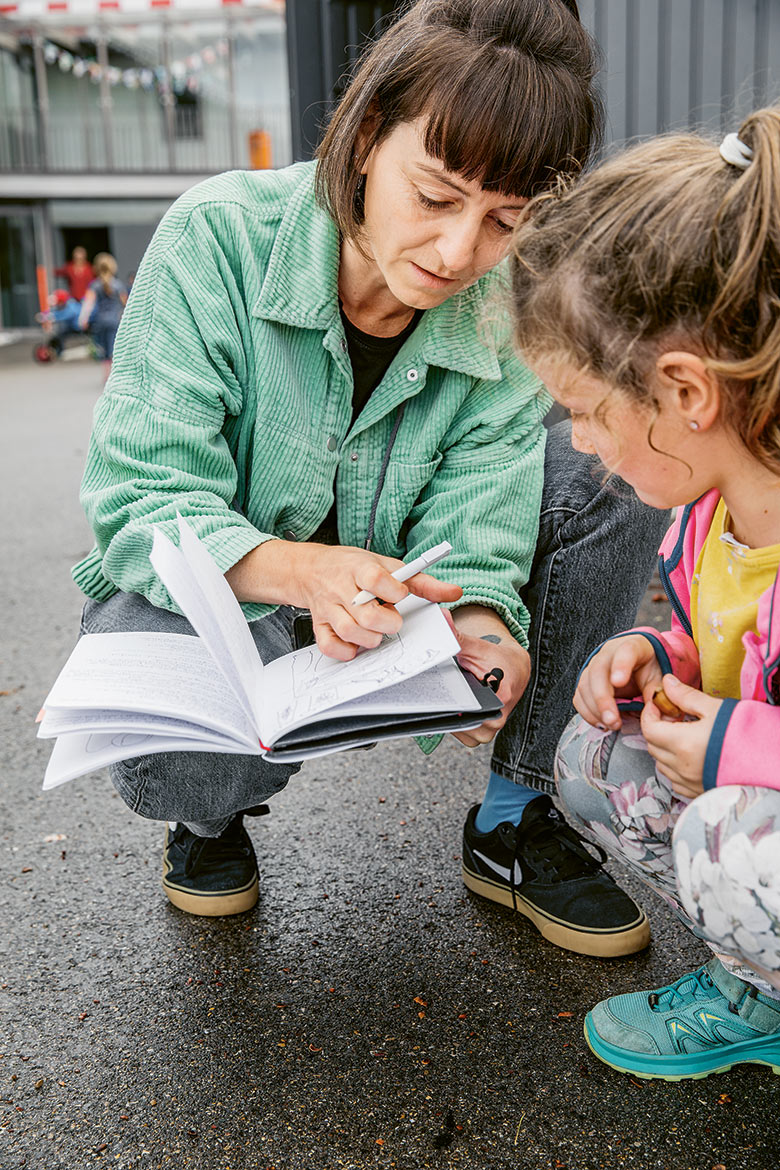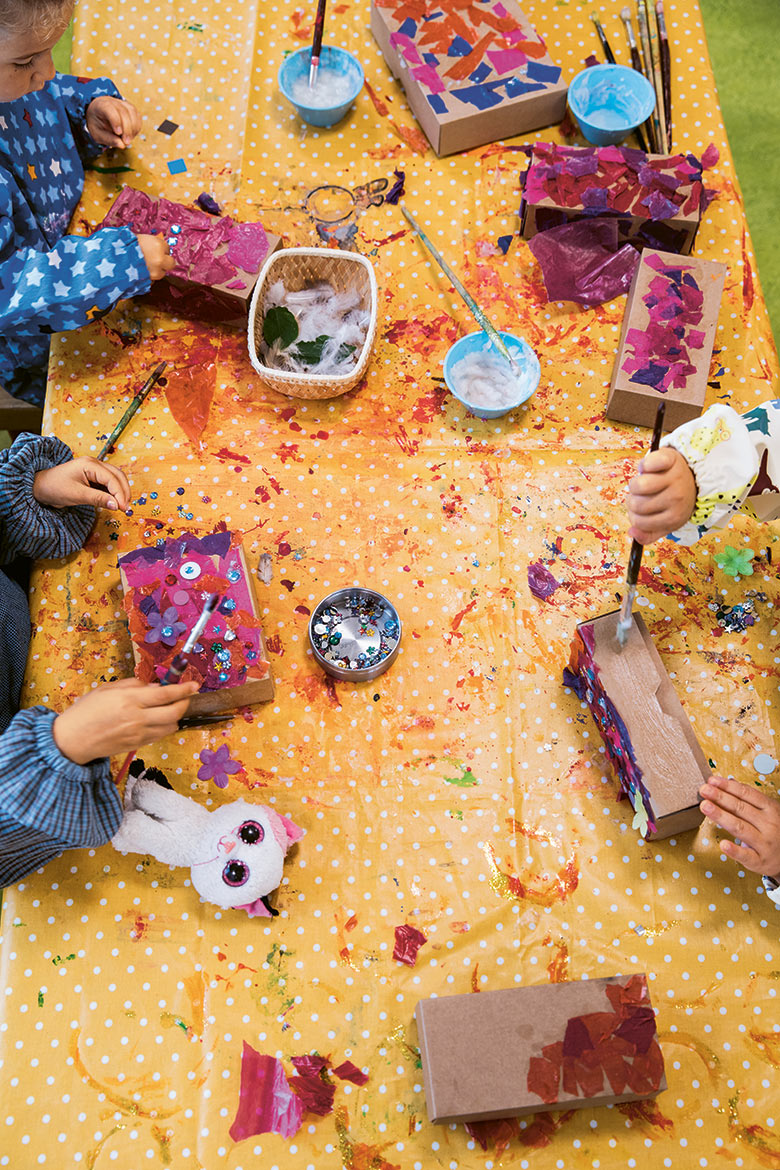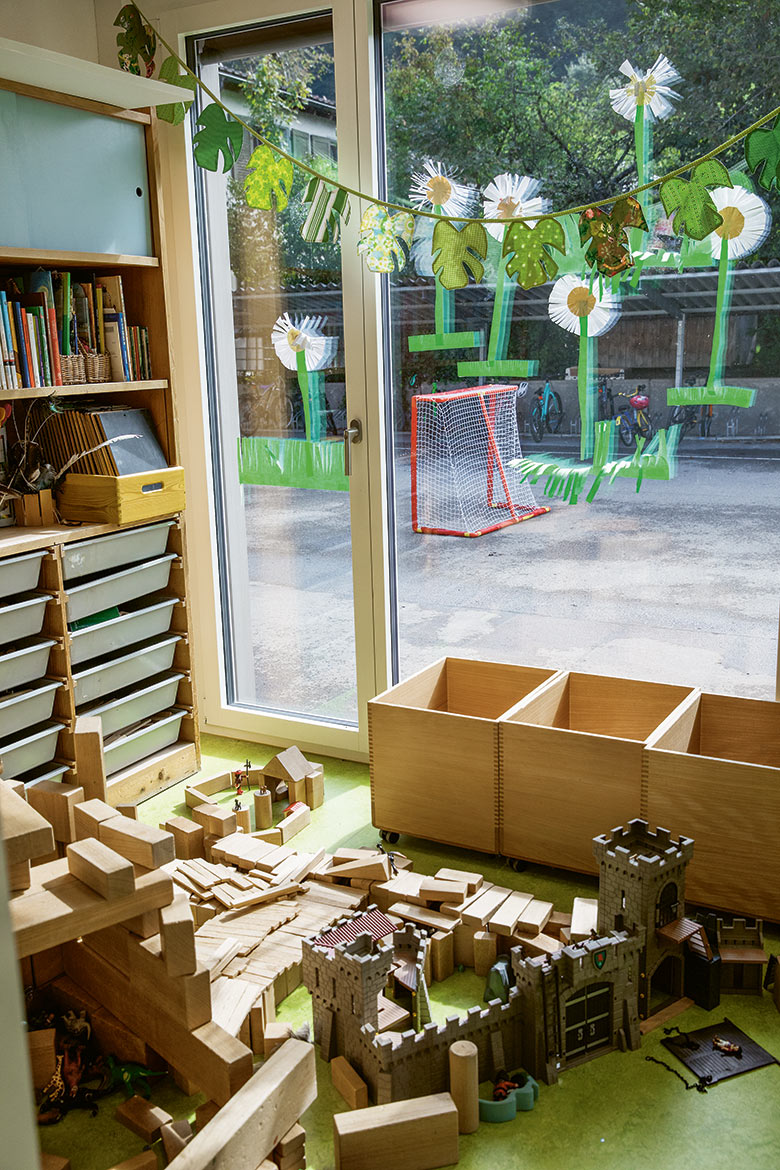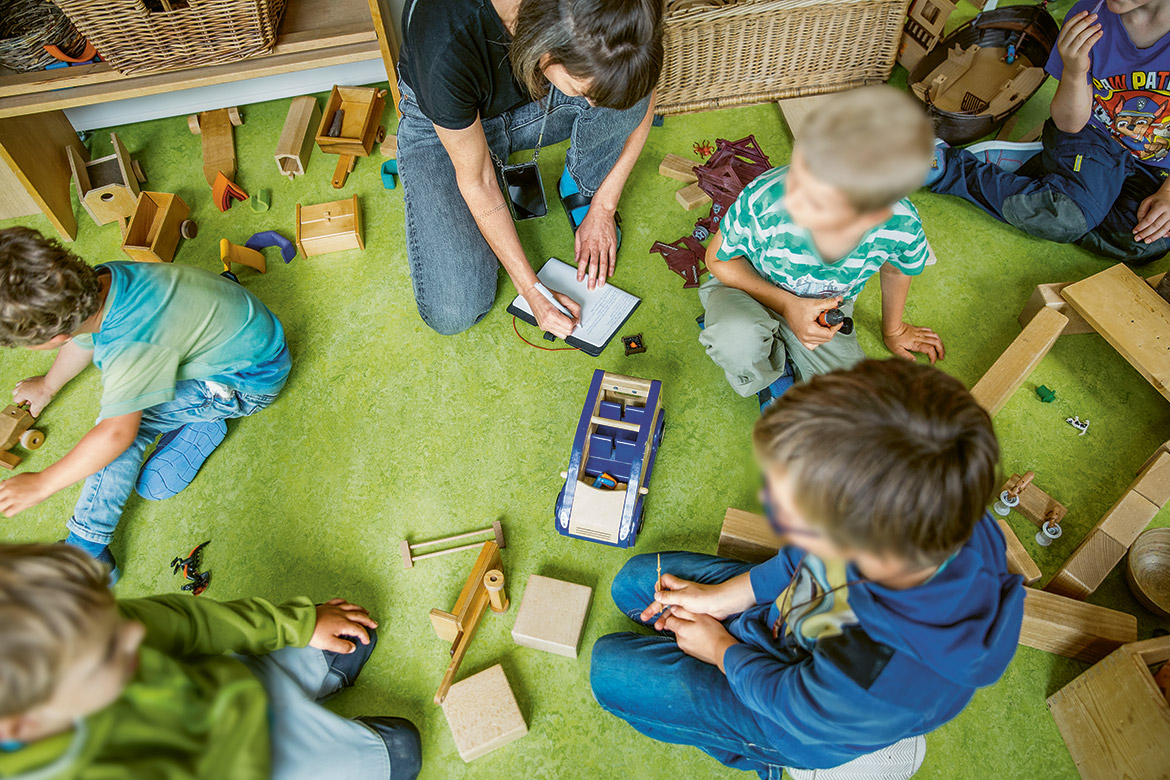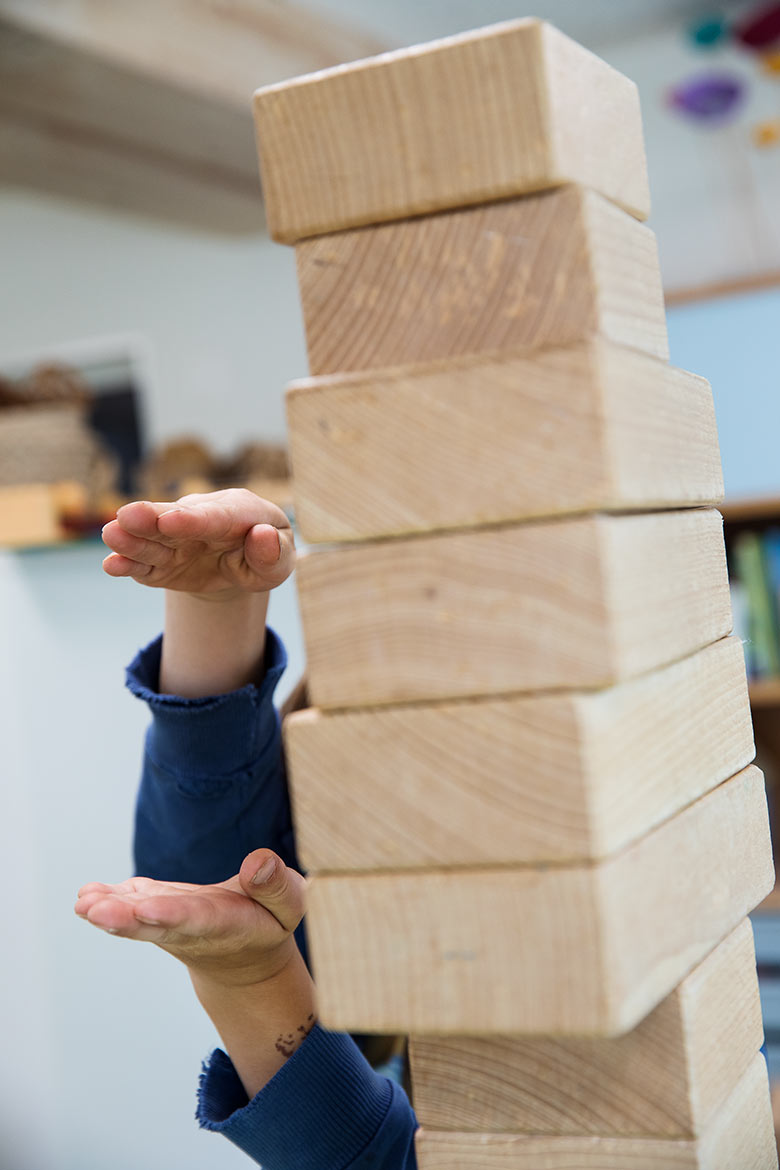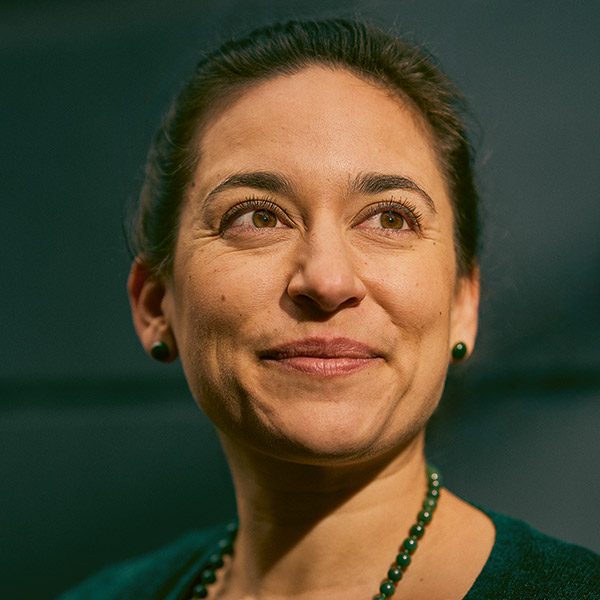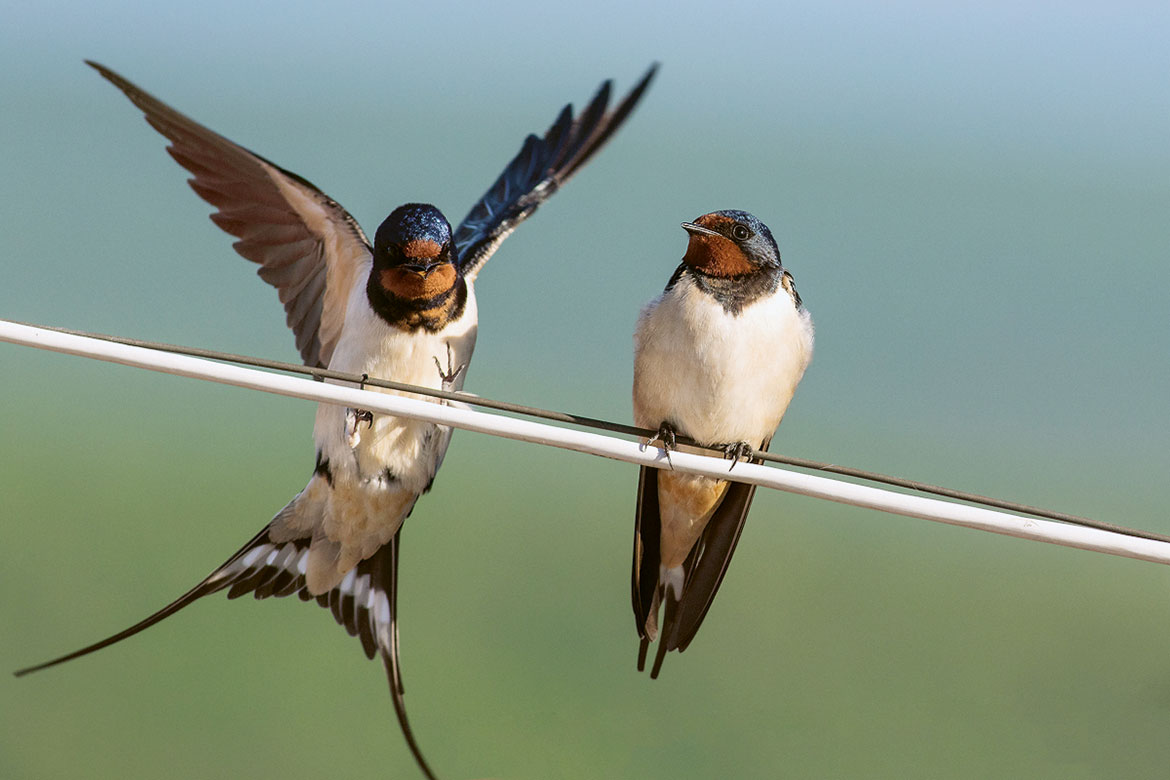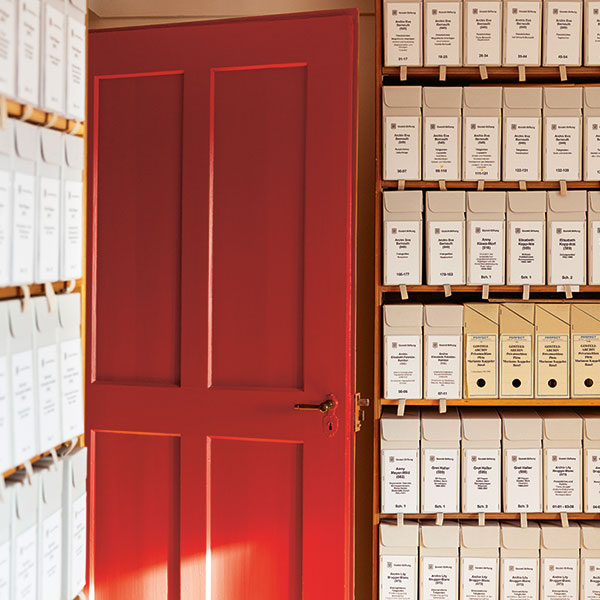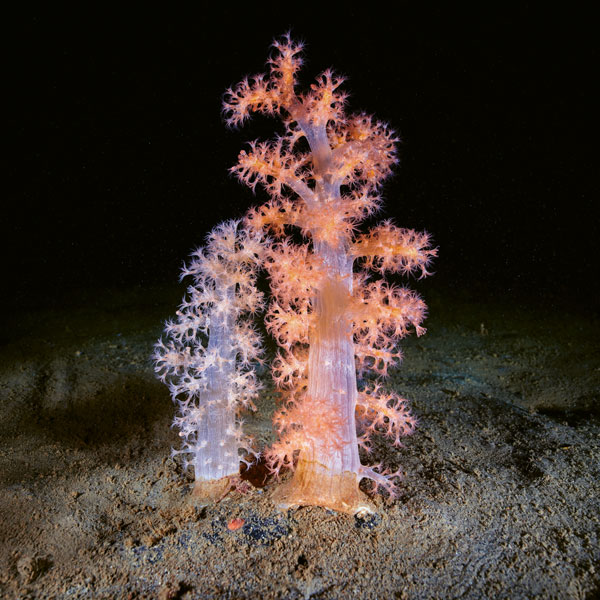REPORT
Remember the days of the old schoolyard
Children and nature belong together – at least in an ideal world. Three anthropologists have been observing very closely how children and their natural environment are indeed intertwined. Horizons has spent a day at their kindergarten to find out more.
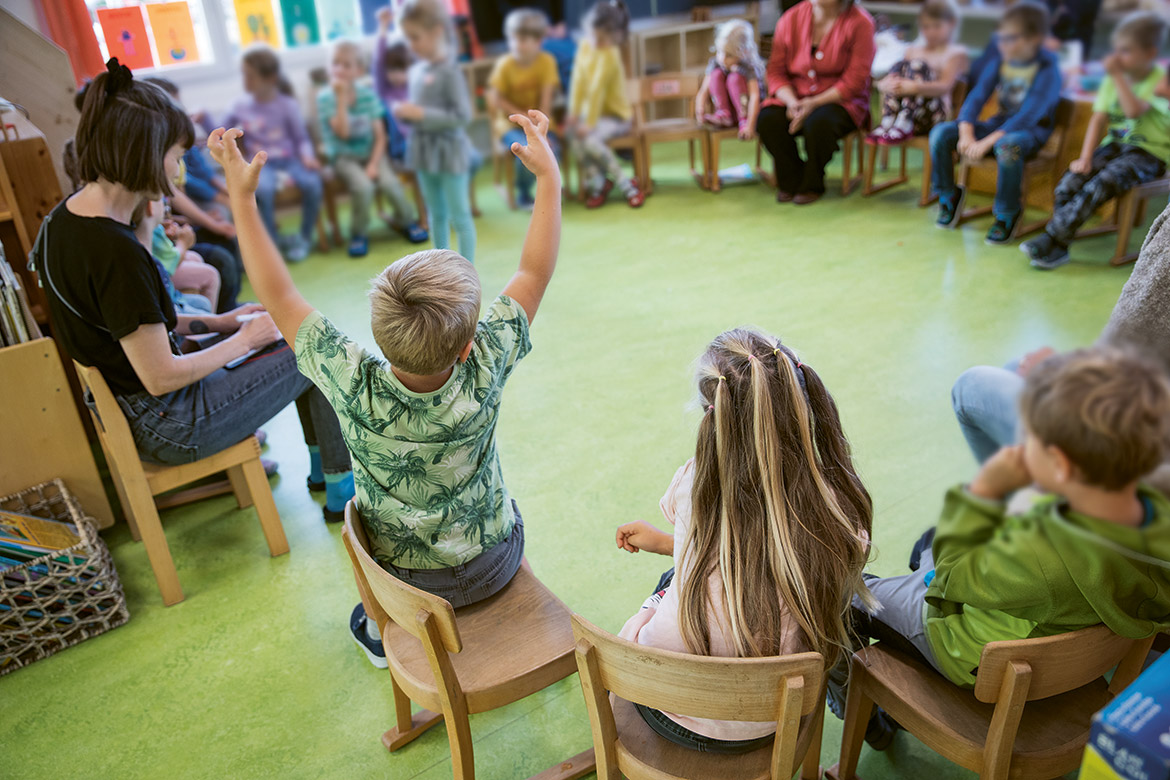
To get as close as possible to their object of research, but without losing their analytical distance: this is the goal of anthropologists from the Zurich University of Teacher Education during their field research in kindergartens. | Image: Stephan Rappo
The three researchers enter the kindergarten during the kids’ mid-morning break. Colourful little shoes are drumming across the linoleum floor, while the corridor echoes with laughter and cries. Some of the kids get into pedal cars outside and ride across the playground that’s still wet from the night before. It’s a Thursday morning in autumn, and last night brought the first rain in a long time. Raincoats and trousers hang on the coat hooks while Wellington boots are lined up on the floor beneath them. “The coat rack in the corridor is an interesting place for us”, says Anja Sieber Egger, one of the researchers, pulling out her notepad. “It’s an in-between space where inside and outside connect, so to speak”.
She points to the wall above the coat rack, where dried flowers and grasses are hanging. In the middle there’s a wreath woven from twigs, with artificial, felt red flowers stuck in it. “Look here, for example. This already creates a reference to nature”, she explains. She starts making her first notes. The three researchers find another such example right next to the schoolroom entrance: a basket full of sticks that have been collected from the forest and that have handmade lanterns hanging from them. “Nature has come straight into this space”.
Researchers in the hurly-burly
Anja Sieber Egger, Gisela Unterweger and Felizitas Juen are social and cultural anthropologists. They lecture and conduct research at the Zurich University of Teacher Education. Their team also includes Georg Rissler, an educationalist who isn’t with them today. They are working on a project entitled “NaturenKindheiten in Verhandlung” (‘Negotiating nature/childhood’) to find out how relationships with the environment and nature are shaped in everyday life in a kindergarten. They do this mostly by means of participatory observation – a popular method for field research in the social sciences.
This places the ethnologists themselves in the midst of the events they are investigating, trying to approach their subjects as closely as possible without losing their analytical distance. It’s sometimes a real balancing act. “We are occasionally also asked to tie shoelaces”, says Unterweger, who runs the project together with Sieber Egger. Time and again, they also end up in conversation with the children. “Mostly, however, we are in an observing position”. It doesn’t seem to bother the children, who continue to play unconcernedly when the researchers crouch in the wooden house next to them with their notepads or kneel in front of their building blocks.
The researchers hope to find answers to significant questions by observing these kids. What’s their relationship to nature? How do they engage with non-human objects and creatures, and how do these in turn engage with the children? Their aim is to break down the rigid distinction between nature and culture. They are guided in this by a current, post-humanist theory that focuses not only on humans, but also treats objects and nature itself as agents. “Most theories until now have been conceived from the human perspective”, says Unterweger. “But we are interested in how humans and nature are interwoven”.
The research group monitors a total of three kindergartens over the course of a single year. They’re all in the canton of Zurich. One is in the city itself, another in the suburbs, and the third is here, in a village in the Zurich Oberland. It is the most rural of the three – you can watch cows grazing through the window, and there’s a pond surrounded by hedges and trees. In order to maintain the children’s privacy, the exact location and the names of both the kindergarten teacher and their children have to remain anonymous in this report for Horizons.
To splash or not to splash?
Just because nature is situated just outside the kindergarten, say the researchers, doesn’t tell us anything about the relationship between nature and the children here. But they naturally have opportunities different from those available to children in an urban environment. To give an example, they were able to visit a sheep farmer shortly before the summer holidays, where they watched the shearing of his sheep and helped to wash and dry the wool.
Now they have a carding machine in the kindergarten, and a girl with bright blue eyes and a ponytail is turning the crank with all her might to comb the wool. “You don’t normally find opportunities like this in the city”, says Unterweger. “So the kindergarten teachers there create a different kind of connection to nature, such as by taking trips to the forest or to the zoo”.
‘Relational agency’ plays a role in this, and it’s of particular interest to the researchers in the project. This is a way of describing the influence that the environment, materials and objects exert on the children’s ability to act. Felizitas Juen, a doctoral student, has recorded one such example on video. It shows a puddle on the playground. A ball rolls through it, one child jumps into it and another rides a pedal car through it. “It’s just a puddle”, says Juen, “But it can set different actions into motion simply through the fact that it exists”.
There’s another example of agency from the playground on the video. Juen is standing near a group of children who are cracking the nuts from a hazel bush that have fallen to the ground. One child hits them with a stone, while the others stamp on them, crushing them with their Wellingtons or their trainers. A girl has succeeded in cracking one, and peels out a whitish nut. She’s unsure of herself and asks a child who has already cracked a few of them: “Can you eat these?” – “Yes”, they reply.
Nature and humans belong together
Unterweger explains the significance of what’s in the video. “It’s the children themselves who decide what to do with what’s around them”. At the same time, rules and norms from outside have an impact on them. Like with the sandpit: “Every kindergarten has a sandpit, and the children love it”, says Sieber Egger. They can make mud in it, for example, and create all manner of structures. But at the same time, there are plenty of instances in which normative behaviour is insisted upon: “The sand may not be thrown around or shovelled out. And it’s a nuisance whenever it’s dragged into the buildings”.
The kindergarten teacher also plays an important role. How much does she actually intervene? “In this kindergarten, the kids don’t always have to tidy up everything straightaway. Sometimes they’re allowed to let things remain as they are”, observes Sieber Egger. “This gives them greater opportunities to explore their creativity freely”.
In fact, the kindergarten teacher is usually in the background and gives clear instructions – albeit only a few. She’s been in this profession for over 40 years. That’s probably why her charges – some 25 children altogether – don’t get her worked up. Once you try and see things from the researchers’ perspective, you suddenly see relationships with nature everywhere. There are paper flowers stuck to the window and a hedgehog costume that a child has put on while at play. There’s the doll’s house made of wood, and the children’s many plush animals that they adore. The list could go on and on. “Even snotty noses and ticks suddenly become interesting”, says Sieber Egger. They too, he insists, are a sign that something from nature has interacted with the children – in these cases, bacteria and tiny animals.
“We are busy collecting a lot of evidence”, says Unterweger. They’ll no doubt be discarding a lot of it, for they are only at the beginning of their research and don’t expect to get their initial results before next year at the earliest. But what is the point of it all? Unterweger explains: “We want to use our results to show how relationships between humans and the environment develop in an interwoven manner”. They want their project to make a contribution to the scientific debates about the ‘Anthropocene’, the age in which the impact of humans has become one of the most important factors on Earth.
“If we’re going to find solutions to big societal challenges, then it makes sense that we shouldn’t always think of everything from merely the human perspective”, says Unterweger. “We hope that our research can help to extricate us from our old habits of how we see things, and enable us to gain new perspectives”.
In concrete terms, their results might be able to serve as a basis for reflecting on school curricula – such as in the subject ‘Education for sustainable development’. “If we want to consider how to teach children the value of recycling, for example, you could in future choose an approach that also takes into account the children’s world of experience”, says Sieber Egger. In her opinion, we are going to need to adopt a different approach if we are to have any hope of one day coping with the climate crisis. “We have to hunt for alternatives and break with the old”, she says.
In the end, it’s also an animal that sends the children off to lunch: a large, grey cuddly mouse. The kids stand on their chairs in a circle with their backs turned to each other. “Whoever feels the mouse can go out”, says the kindergarten teacher. Appropriately, the classroom is now as quiet as a mouse. She slowly goes round the circle, using the mouse to stroke the children’s hands, neck or ankles, one by one. And one after the other, they get down from their chairs and disappear out into the corridor, their in-between space, before rushing outside.

